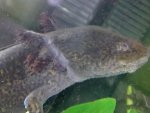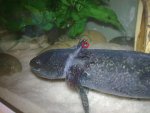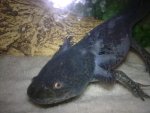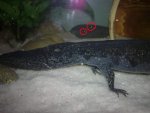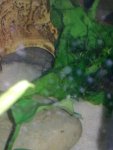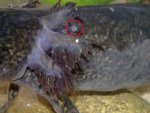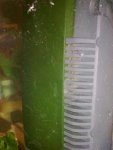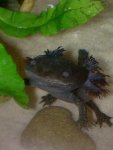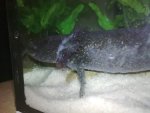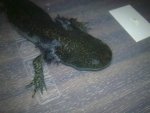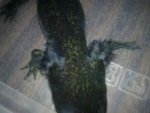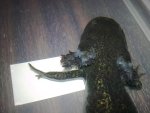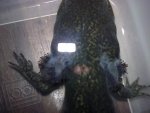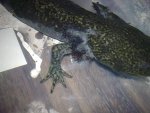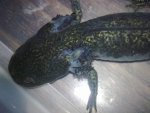Hey guys,
Last weekend I noticed that my axolotl was scratching her gills. I had never noticed this before and she was doing it pretty frequently. I thought I'd better monitor it, as I suspected that it might progress to a fungal infection.
Sure enough, earlier this week i noticed a bit of white growth on her gills. The growth hasn't spread all that much, just a few very small specks, but it seems very weird. I noticed the white growth floating around the tank. It also seems that the white growth is easily dispatched. An intense gill flick sends it flying, as does eating. At this minute, there is no visible infection, as she has just been fed. Is this normal? Could it be simple shedding?
If it is a fungal infection, what should I do? She isn't displaying any signs of stress at all (no forward gills,curled tail, erratic swimming), she is still eating everyday and the water parameters are fine (ammonia=0, nirite=0, nitrate=40). She has also stopped scratching.
Do i leave it and let it sort itself out/ wait till it progresses or should I act now?? I am hesitant to give her a salt bath, as I don't want to stress for something that may be pretty minor.
Thoughts?
I have attached some photos. Sorry about the poor quality, I had to take them with my phone as my card reader is playing up. Very hard to get a good picture because the infection is so small, but I have circled what I managed to find in red.
Cheers
Paul
Last weekend I noticed that my axolotl was scratching her gills. I had never noticed this before and she was doing it pretty frequently. I thought I'd better monitor it, as I suspected that it might progress to a fungal infection.
Sure enough, earlier this week i noticed a bit of white growth on her gills. The growth hasn't spread all that much, just a few very small specks, but it seems very weird. I noticed the white growth floating around the tank. It also seems that the white growth is easily dispatched. An intense gill flick sends it flying, as does eating. At this minute, there is no visible infection, as she has just been fed. Is this normal? Could it be simple shedding?
If it is a fungal infection, what should I do? She isn't displaying any signs of stress at all (no forward gills,curled tail, erratic swimming), she is still eating everyday and the water parameters are fine (ammonia=0, nirite=0, nitrate=40). She has also stopped scratching.
Do i leave it and let it sort itself out/ wait till it progresses or should I act now?? I am hesitant to give her a salt bath, as I don't want to stress for something that may be pretty minor.
Thoughts?
I have attached some photos. Sorry about the poor quality, I had to take them with my phone as my card reader is playing up. Very hard to get a good picture because the infection is so small, but I have circled what I managed to find in red.
Cheers
Paul

